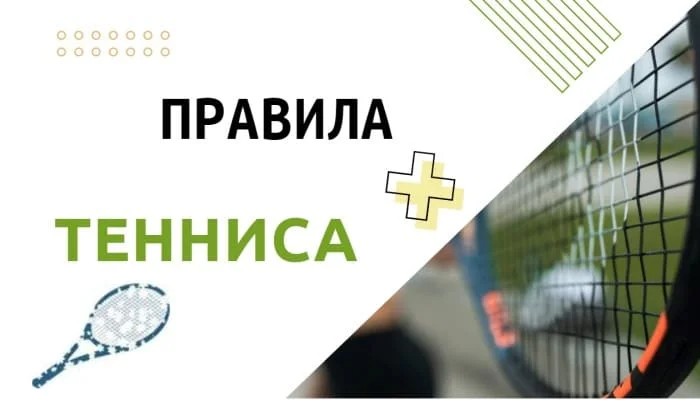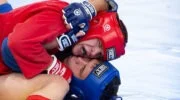In the article “Rules of tennis” we will talk about the basic rules of the game of tennis, and you will learn the basic excerpts from the rules of the matches.
#Tennis #BigTennis #LawnTennis #TennisRules #ProTennis
Lawn tennis is one of the most popular sports in the world. Every year it holds the largest championships in America, Australia, Europe, which gathers millions of fans.
If you do not yet know the rules of tennis, our article will help to correct the situation. Learning the rules is worth starting with the tennis court.
Tennis court
Tennis can be played by two or four players. When two players play against each other, it is called a singles game. In singles play, the width of the court does not include the corridors, which for clarity we have highlighted in red.
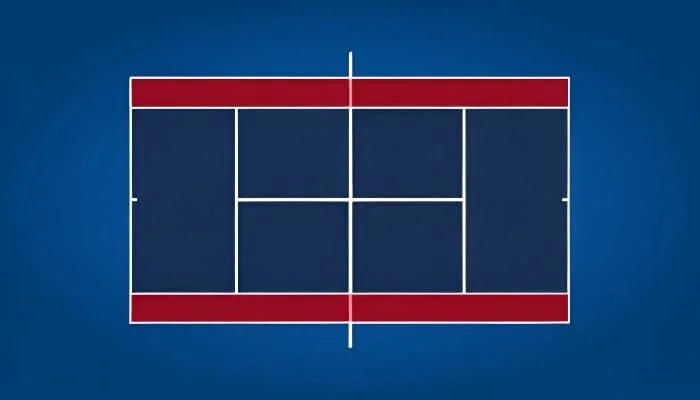
Thus, in single game you need to hit the area of the court marked in green.
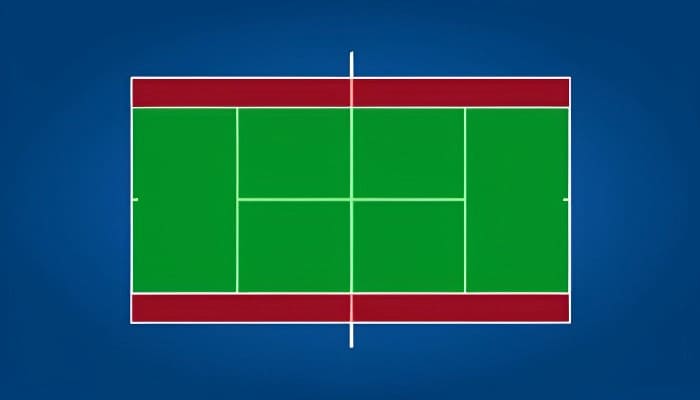
When played by 4 people, pair on pair, such a game is called a doubles game. In doubles play the width of the court already includes the previously marked red corridors, i.e. the full width of the court is used.
In the center of the court there are serving lines. In the photo below we have highlighted them in red.
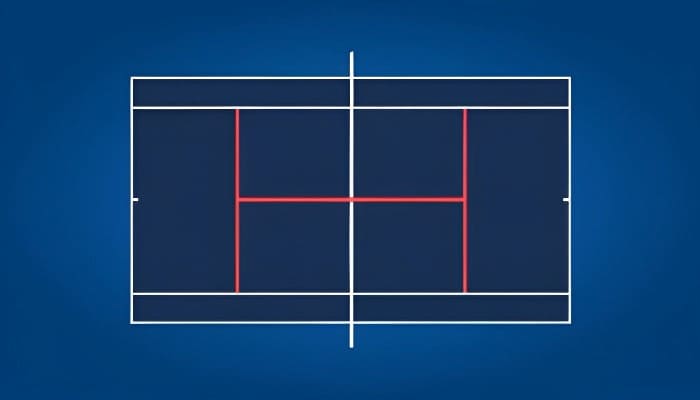
Basic rules of tennis
The aim of the game is to throw the ball to the opponent’s side so that he could not return it. In tennis, 1 bounce from the court is allowed; if the ball touches the court twice in a row, it is considered a loss. A loss is also scored if the ball is knocked off the court.
A tennis match consists of “sets” and “games”. A set is in English a “party”, and a game is a “game”. There can be from 3 to 5 sets in a match. In a three–set match, the winner is the tennis player who won two sets, and in a five-set match – 3 sets, respectively.
To win a set, you must win six games with a two-game advantage. If the score in the set is 6 – 5, then an extra game is played. If the score is 7 – 5, the set is over. Well, and if the score becomes 6 – 6, then you have to arrange a tie-break.
The extra game is scored in kind (1, 2, 3, etc.). The tie-break must also be won by a 2-point margin, e.g., 7 – 9. Thus, an extra game can last quite a long time.
In a regular game, the score is played as follows: the first ball scored gives a player 15 points, the second 30 points, the third 40 points, and the fourth determines the outcome of the game. If the players score 40 points each in a game, the score moves to the so-called “Deuce” stage. Subsequently, the score will change depending on the situation in the game. If a player has an advantage of 1 ball, the score is called “more” for the server, or “less” for the receiver. The next ball play may return the score to “Deuce” or end the game with a victory for the player.
When serving, the player must not step over the court line, and the player must be between the center mark and the sideline. The first service of the game is served diagonally from the right side of the court (the photo below shows the server’s spot in red and the green square where the service should be served).
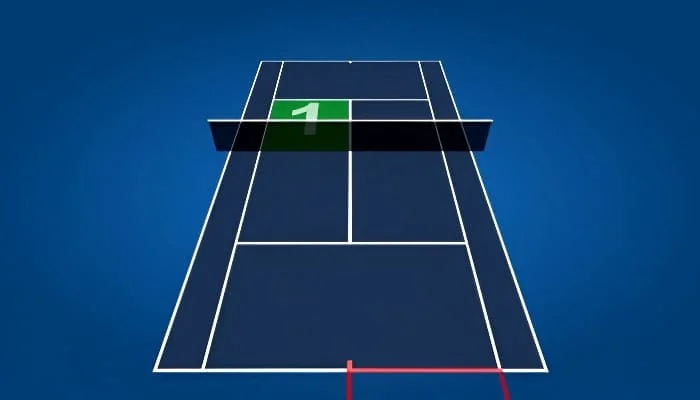
In the next ball game, the player must change the serve square to “left” (photo below), and so on, one at a time. The right to serve goes from one player to another in each game.
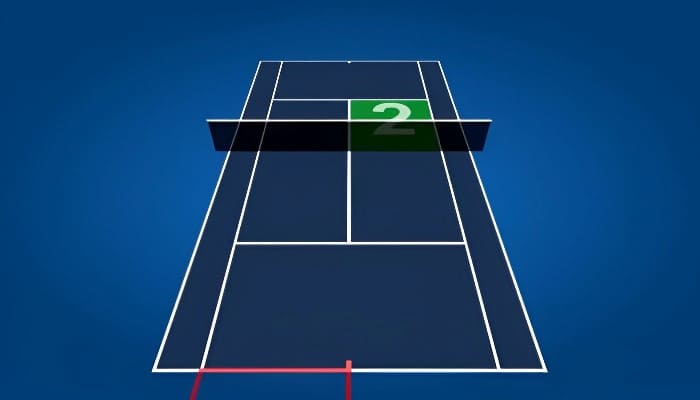
If an athlete misses a serve, the ball goes over the serve line, a player oversteps the line, misses the ball or hits the net at all, you can serve again in the same square. But the second error brings the opponent a certain number of points.
Cases where a serve is overplayed:
- The ball touched the net and landed in the appropriate square during the service.
- If the opponent is not ready to receive the ball.
- The referee has not announced the score after the previous service.
It is forbidden in tennis to hit a serve on the fly. The ball must first touch the court, and then it is only necessary to hit it. Otherwise the ball will be scored to the serving player.
It is forbidden to touch the net and equipment during play, it is forbidden to hit the ball before crossing the net, insulting the opponent or the referee.
Tennis regulations
- Playing equipment (racket, balls, etc.) must comply with the rules of the competition.
- Before the match, a toss is held to determine the sides on the court.
- The sides are exchanged after the completion of each odd game, and in the extra half after the draw of 6 balls.
- The lines are part of the court.
- The break between each ball played is 25 seconds, a game is 90 seconds, and a set is 120 seconds.
- Intentional actions that involve interference with play are punished by a losing point. Accidental actions result in a replay of the ball.
- Any cues in the game are prohibited, even if the coach does so.
- All disputes are decided by the referee.
- In controversial moments of determining where the ball is touched, video replays may be used, the opinion of the linesman, as well as marking the ball on the ground.
Tennis rules
FAQs
The strongest serve in tennis?
There are two types of records: Recognized and Unrecognized by the Tennis Association. Speed records are not recognized because they were not set at major WTP and ATP tournaments and on equipment that does not use official speed technology. The men's recognized speed record - 253 km/hour belongs to John Isner (USA). The unrecognized record - 263 km/hour belongs to Sam Groth (Australia). The women's recognized record - 210.8 km/hour belongs to Sabine Lisicki (Germany). Unrecognized record - 220 km/hour belongs to Garcia Perez (Spain).
What is an Ace in tennis?
An Ace is a successfully executed serve that the opponent failed to return without touching the ball. In tennis, statistics are kept on the number of Aces: Per game; In a match in a row; In a match without double faults; Total number per tournament; In the entire history of performance in a tournament; Total number of Aces in a career.
How long does a tennis match last?
A match in tennis lasts an average of two to three hours. The longest tennis match is the match between John Isner and Nicholas Mau at Wimbledon. The match lasted 3 days and the total playing time was 11 hours and 5 minutes, the final score: 6-4, 3-6, 6-7 (7-9), 7-6 (7-3), 70-68. The shortest match was between Jarkko Nieminen and Bernard Tomic. The match lasted only 28 minutes and 20 seconds and ended with the score: 6:0, 6:1.

